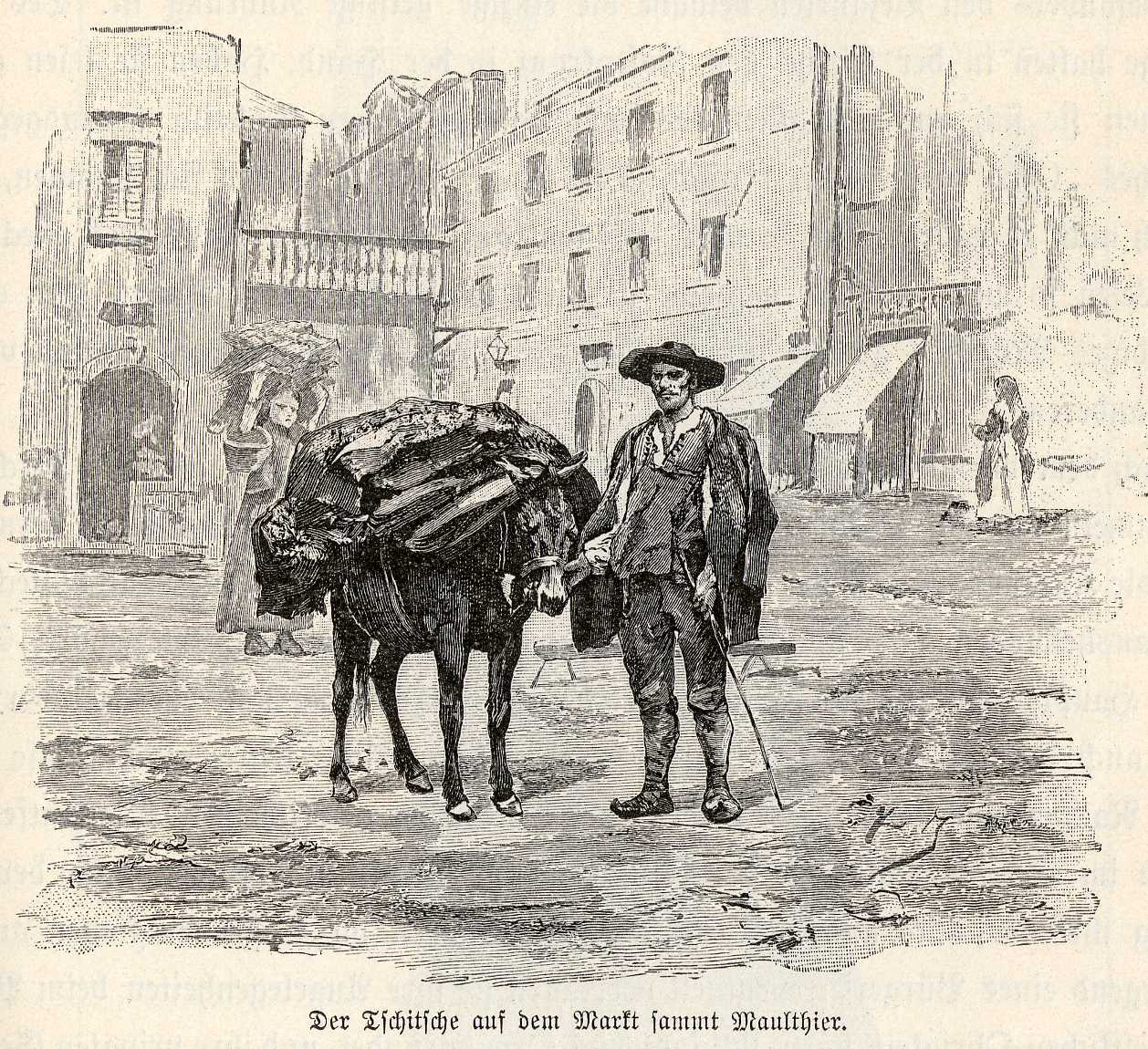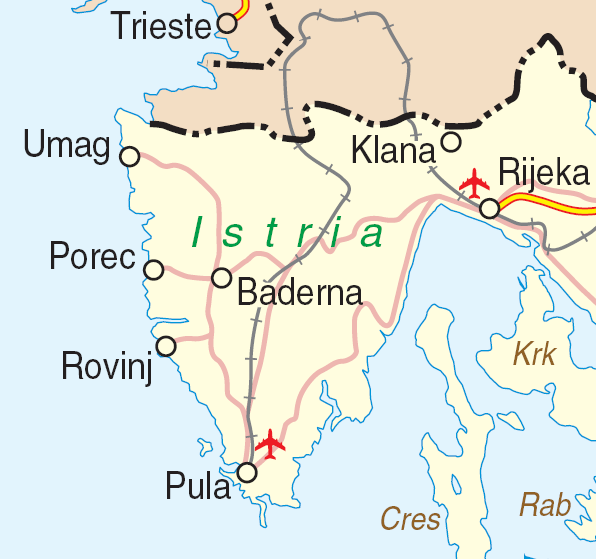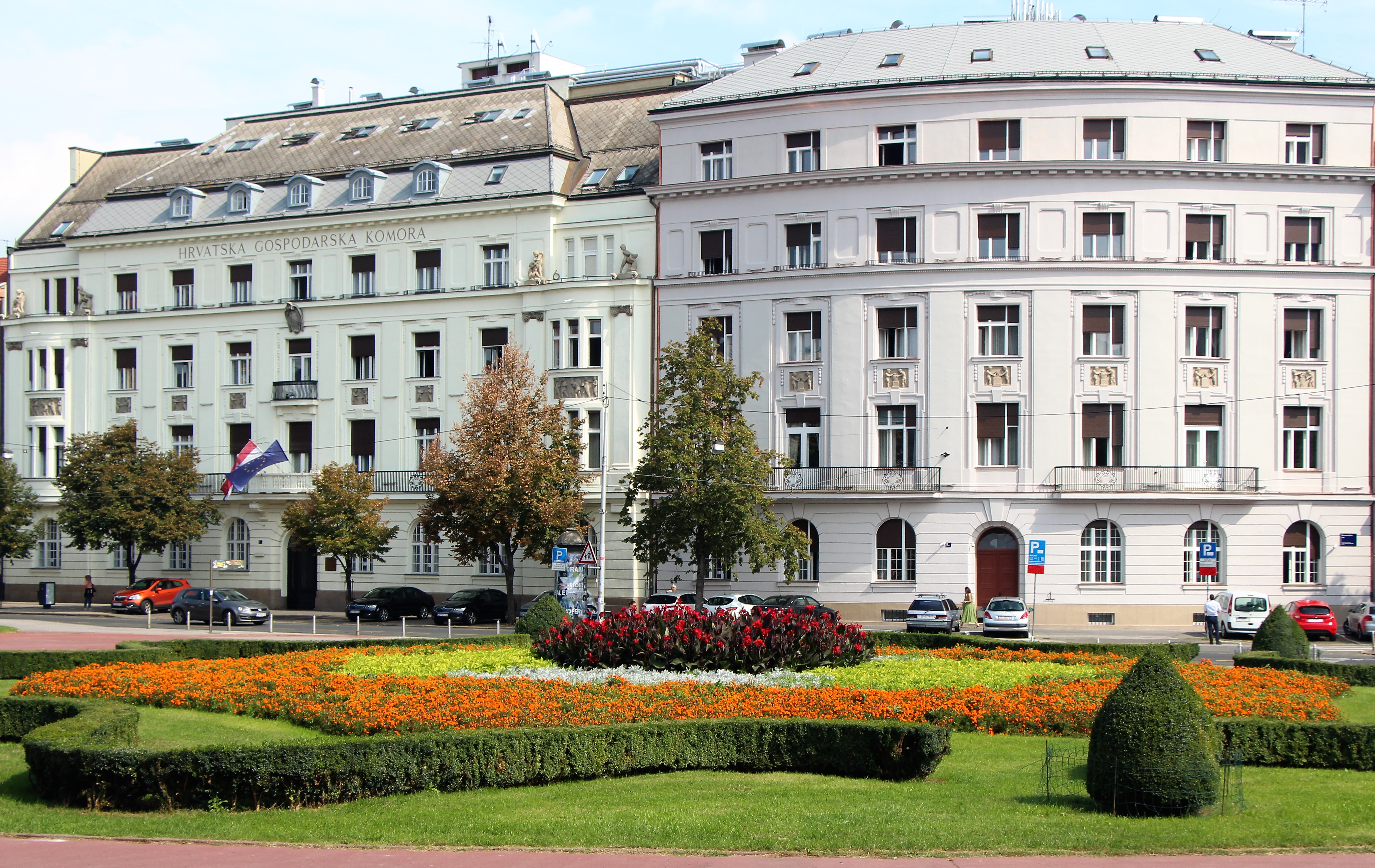|
Lanišće
Lanišće ( it, Lanischie) is a village and municipality in the mountainous Ćićarija area, Istria, Croatia. In 2011, the population of the village itself is 88, with a total of 329 residents in the municipality. Over 92.40% of the population are Croats. There are fourteen settlements in the municipality: Brest, Brgudac, Dane, Jelovice, Klenovšćak, Kropinjak, Lanišće, Podgaće, Prapoće, Račja Vas, Rašpor, Slum, Trstenik and Vodice. Description Municipality Lanišće was formed in 1992, with total area as the largest municipality in the Istria county, while by population density the smallest. There are fourteen settlements in the municipality, Brest, Brgudac, Dane, Jelovice, Klenovšćak, Kropinjak, Lanišće, Podgaće, Prapoće, Račja Vas, Rašpor, Slum, Trstenik and Vodice, and two hamlets, Brljavci and Črnehi, which are according to the statistical data attributed to the village Kropinjak. Almost all villages are mentioned since the 13th-14th century,), 2004, publish ... [...More Info...] [...Related Items...] OR: [Wikipedia] [Google] [Baidu] |
Ćići
Ćić (plural Ćići, sl, Čiči, german: Tschitschen, it, Cicci, Chicchi, Ciccio, Cici), is an ethnonym and Exonym and endonym, exonym in a broader sense for all the people who live in the mountainous Ćićarija area in Croatia and Slovenia. Alongside the term ''Ćiribirci'', in the narrow sense, it is an exonym referring to a community of the Istro-Romanians in the village Žejane in a small part of eastern Ćićarija and the villages around the former Lake Čepić west of the Učka range in Istria, Croatia. Etymology The first, unspecified thesis of possible Romance origin was given by Franz Miklosich in 1860 when he designated all ''Čiči'' as "overall Slavicized Romanians". Linguist and phonologist Josip Ribarić (1880–1954), a native of Vodice in Ćićarija, disproved this thesis with historical documents, anthroponyms and language dialects in the Karst Plateau, karst. According to him, the term ''Ćići'' initially referred to the Romance language, Romance-speaking Balk ... [...More Info...] [...Related Items...] OR: [Wikipedia] [Google] [Baidu] |
Istria County
Istria County (; hr, Istarska županija; it, Regione istriana, "Istrian Region") is the westernmost county of Croatia which includes the biggest part of the Istrian peninsula ( out of , or 89%). Administrative centers in the county are Pazin, Pula and Poreč. Istria County is the most prominent Italian-speaking part of Croatia. History The caves near Pula (in latinium ''Pietas Julia''), ''Lim fjord'', ''Šandalja'', and ''Roumald's cave'', house Stone Age archaeological remains. Less ancient Stone Age sites, from the period between 6000 and 2000 BC can also be found in the area. More than 400 locations are classified as Bronze Age (1800–1000 BC) items. Numerous findings including weapons, tools, and jewelry) which are from the earlier iron era around the beginning of common era. The Istrian peninsula was known to Romans as the ''terra magica''. Its name is derived from the Histri, an Illyrian tribe who as accounted by the geographer Strabo lived in the region. Roma ... [...More Info...] [...Related Items...] OR: [Wikipedia] [Google] [Baidu] |
Countries Of The World
The following is a list providing an overview of sovereign states around the world with information on their status and recognition of their sovereignty. The 206 listed states can be divided into three categories based on membership within the United Nations System: 193 member states of the United Nations, UN member states, 2 United Nations General Assembly observers#Present non-member observers, UN General Assembly non-member observer states, and 11 other states. The ''sovereignty dispute'' column indicates states having undisputed sovereignty (188 states, of which there are 187 UN member states and 1 UN General Assembly non-member observer state), states having disputed sovereignty (16 states, of which there are 6 UN member states, 1 UN General Assembly non-member observer state, and 9 de facto states), and states having a political status of the Cook Islands and Niue, special political status (2 states, both in associated state, free association with New Zealand). Compi ... [...More Info...] [...Related Items...] OR: [Wikipedia] [Google] [Baidu] |
Croatia
, image_flag = Flag of Croatia.svg , image_coat = Coat of arms of Croatia.svg , anthem = "Lijepa naša domovino"("Our Beautiful Homeland") , image_map = , map_caption = , capital = Zagreb , coordinates = , largest_city = capital , official_languages = Croatian , languages_type = Writing system , languages = Latin , ethnic_groups = , ethnic_groups_year = 2021 , religion = , religion_year = 2021 , demonym = , government_type = Unitary parliamentary republic , leader_title1 = President , leader_name1 = Zoran Milanović , leader_title2 = Prime Minister , leader_name2 = Andrej Plenković , leader_title3 = Speaker of Parliament , leader_name3 = Gordan Jandroković , legislature = Sabor , sovereignty_type ... [...More Info...] [...Related Items...] OR: [Wikipedia] [Google] [Baidu] |
Counties Of Croatia
The counties of Croatia ( hr, hrvatske županije) are the primary administrative subdivisions of the Republic of Croatia. Since they were re-established in 1992, Croatia has been divided into 20 counties and the capital city of Zagreb, which has the authority and legal status of both a county and a city (separate from the surrounding Zagreb County). As of 2015, the counties are subdivided into 128 cities and 428 (mostly rural) municipalities. The divisions have changed over time since the medieval Croatian state. They reflected territorial losses and expansions; changes in the political status of Dalmatia, Dubrovnik and Istria; and political circumstances, including the personal union and subsequent development of relations between the Kingdom of Croatia-Slavonia and the Kingdom of Hungary. Government County assembly ( hr, županijska skupština, label=none) is a representative and deliberative body in each county. Assembly members are elected for a four-year term by popu ... [...More Info...] [...Related Items...] OR: [Wikipedia] [Google] [Baidu] |
Croatian Chamber Of Economy
Croatian Chamber of Economy ( hr, Hrvatska gospodarska komora, abbreviation HGK), is a professional association of businesspeople in Croatia, and the oldest institution of its kind on the Croatian territory. History It originates from the Chamber of Trades (''trgovačko-obrtnička komora''), which began operating on 16 February 1852 in Zagreb, on the basis of the imperial decree of March 18, 1850. During the 1920s the chamber was significantly modernized, growing into a strong and reputable institution on a European scale. In 1932 it was divided into Trade-Industrial and Handicraft Chamber, and in 1938 the Chamber of Commerce and the Chamber of Industry were created separately. Apart from a few years in the postwar period, those chambers operated as separate branches until 1962, when the unified Croatian Chamber of Economy was founded. ] Chamber today According to the 1991 law the Chamber operates under its current name. It is structured after the European tradition of chamber org ... [...More Info...] [...Related Items...] OR: [Wikipedia] [Google] [Baidu] |
Central European Time
Central European Time (CET) is a standard time which is 1 hour ahead of Coordinated Universal Time (UTC). The time offset from UTC can be written as UTC+01:00. It is used in most parts of Europe and in a few North African countries. CET is also known as Middle European Time (MET, German: MEZ) and by colloquial names such as Amsterdam Time, Berlin Time, Brussels Time, Madrid Time, Paris Time, Rome Time, Warsaw Time or even Romance Standard Time (RST). The 15th meridian east is the central axis for UTC+01:00 in the world system of time zones. As of 2011, all member states of the European Union observe summer time (daylight saving time), from the last Sunday in March to the last Sunday in October. States within the CET area switch to Central European Summer Time (CEST, UTC+02:00) for the summer. In Africa, UTC+01:00 is called West Africa Time (WAT), where it is used by several countries, year round. Algeria, Morocco, and Tunisia also refer to it as ''Central European ... [...More Info...] [...Related Items...] OR: [Wikipedia] [Google] [Baidu] |
Central European Summer Time
Central European Summer Time (CEST), sometimes referred to as Central European Daylight Time (CEDT), is the standard clock time observed during the period of summer daylight-saving in those European countries which observe Central European Time (CET; UTC+01:00) during the other part of the year. It corresponds to UTC+02:00, which makes it the same as Eastern European Time, Central Africa Time, South African Standard Time, Egypt Standard Time and Kaliningrad Time in Russia. Names Other names which have been applied to Central European Summer Time are Middle European Summer Time (MEST), Central European Daylight Saving Time (CEDT), and Bravo Time (after the second letter of the NATO phonetic alphabet). Period of observation Since 1996, European Summer Time has been observed between 01:00 UTC (02:00 CET and 03:00 CEST) on the last Sunday of March, and 01:00 UTC on the last Sunday of October; previously the rules were not uniform across the European Union. There were proposals ... [...More Info...] [...Related Items...] OR: [Wikipedia] [Google] [Baidu] |
Ćićarija
Ćićarija ( sl, Čičarija; it, Cicceria, Monti della Vena; ruo, Cicearia; german: Tschitschen Boden), is a mountainous plateau in the northern and northeastern part of the Istria peninsula, long and wide. It mostly lies in Croatia, while its northern part lies in southwestern Slovenia (the traditional region of Inner Carniola). The highest peak is Veliki Planik at . At (2001), Ćićarija is sparsely populated, due to its karst landscape, poor economic development and rough climate. Name The name ''Ćićarija'' is derived from the South Slavic term ''Ćići, Ćić'', which refers to Istrians living in the area around the Učka, Učka Mountains, originally referring to the Vlachs and Istro-Romanians of the area. The ethnonym is believed to derive from the Istro-Romanian language, Istro-Romanian word ''ce'' 'what', which is a semantic basis for other regional ethnonyms (cf. ''Kajkavian dialect, Kajkavian'', ''Chakavian dialect, Chakavian'', etc.). Sources * * * References ... [...More Info...] [...Related Items...] OR: [Wikipedia] [Google] [Baidu] |
Istria
Istria ( ; Croatian language, Croatian and Slovene language, Slovene: ; ist, Eîstria; Istro-Romanian language, Istro-Romanian, Italian language, Italian and Venetian language, Venetian: ; formerly in Latin and in Ancient Greek) is the largest peninsula within the Adriatic Sea. The peninsula is located at the head of the Adriatic between the Gulf of Trieste and the Kvarner Gulf. It is shared by three countries: Croatia, Slovenia, and Italy.Marcel Cornis-Pope, John Neubauer''History of the literary cultures of East-Central Europe: junctures and disjunctures in the 19th And 20th Centuries'' John Benjamins Publishing Co. (2006), Alan John Day, Roger East, Richard Thomas''A political and economic dictionary of Eastern Europe'' Routledge, 1sr ed. (2002), Croatia encapsulates most of the Istrian peninsula with its Istria County. Geography The geographical features of Istria include the Učka/Monte Maggiore mountain range, which is the highest portion of the Ćićarija/Cicceria ... [...More Info...] [...Related Items...] OR: [Wikipedia] [Google] [Baidu] |
Croats
The Croats (; hr, Hrvati ) are a South Slavic ethnic group who share a common Croatian ancestry, culture, history and language. They are also a recognized minority in a number of neighboring countries, namely Austria, the Czech Republic, Germany, Hungary, Italy, Montenegro, Romania, Serbia, Slovakia and Slovenia. Due to political, social and economic reasons, many Croats migrated to North and South America as well as New Zealand and later Australia, establishing a diaspora in the aftermath of World War II, with grassroots assistance from earlier communities and the Roman Catholic Church. In Croatia (the nation state), 3.9 million people identify themselves as Croats, and constitute about 90.4% of the population. Another 553,000 live in Bosnia and Herzegovina, where they are one of the three constituent ethnic groups, predominantly living in Western Herzegovina, Central Bosnia and Bosnian Posavina. The minority in Serbia number about 70,000, mostly in Vojvodina. The ... [...More Info...] [...Related Items...] OR: [Wikipedia] [Google] [Baidu] |
Hamlet (place)
A hamlet is a human settlement that is smaller than a town or village. Its size relative to a Parish (administrative division), parish can depend on the administration and region. A hamlet may be considered to be a smaller settlement or subdivision or satellite entity to a larger settlement. The word and concept of a hamlet has roots in the Anglo-Norman settlement of England, where the old French ' came to apply to small human settlements. Etymology The word comes from Anglo-Norman language, Anglo-Norman ', corresponding to Old French ', the diminutive of Old French ' meaning a little village. This, in turn, is a diminutive of Old French ', possibly borrowed from (West Germanic languages, West Germanic) Franconian languages. Compare with modern French ', Dutch language, Dutch ', Frisian languages, Frisian ', German ', Old English ' and Modern English ''home''. By country Afghanistan In Afghanistan, the counterpart of the hamlet is the Qila, qala (Dari language, Dari: ... [...More Info...] [...Related Items...] OR: [Wikipedia] [Google] [Baidu] |





.png)
